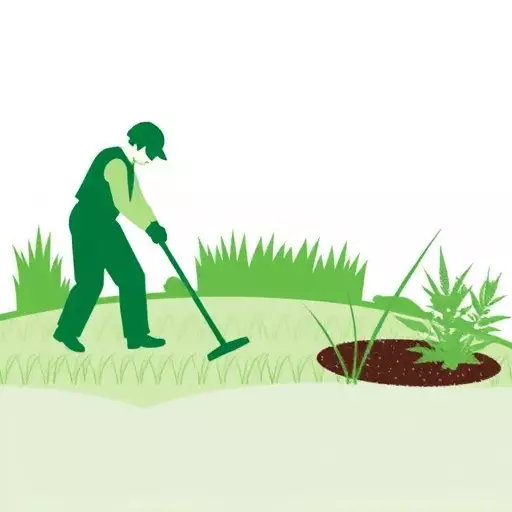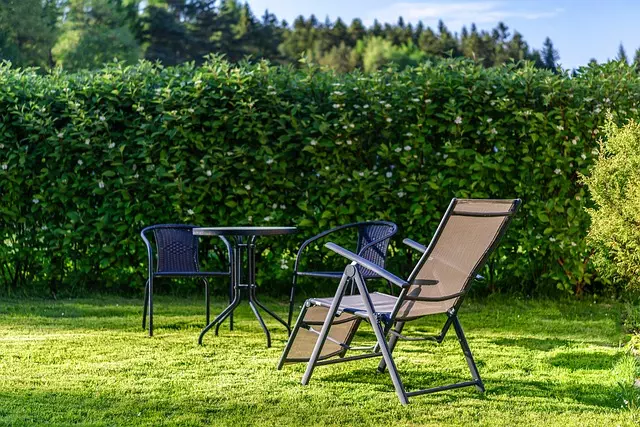Lawn care and landscaping involve crucial practices like edging for clean lines and mulching for improved grass health and soil richness. Types of mulch (organic vs inorganic) and edger tools (manual or powered) cater to specific needs, with natural options enhancing aesthetics and synthetic solutions offering low-maintenance benefits. Effective practices include proper mowing, even mulch application, and drainage management, all contributing to a vibrant, healthy lawn.
Transform your lawn into a picture of perfection with mulching and edging—essential practices in lawn care and landscaping. This guide delves into the benefits of mulching, exploring its various types for optimal lawn health. We also detail effective edging techniques to create crisp, clean lines defining your yard’s edges. Discover the right tools for the job, ensuring top results. Learn a step-by-step approach to implement these practices, enhancing your lawn’s overall aesthetics and health.
- Understanding Mulching: The Benefits and Types for Lawn Health
- Edging Techniques: Creating Clean Lines and Defining Your Lawn's Edge
- Choosing the Right Mulch and Edger Tools for Optimal Results
- Step-by-Step Guide: Implementing Effective Mulching and Edging Practices
Understanding Mulching: The Benefits and Types for Lawn Health

Mulching is an essential practice in lawn care and landscaping, offering numerous benefits for the health and appearance of your grass. It involves placing a layer of organic or inorganic material on top of the soil to retain moisture, suppress weeds, and enrich the soil as it decomposes. This natural process not only enhances the aesthetic appeal of your lawn but also contributes to its overall well-being.
There are various types of mulch, each with distinct advantages. Organic mulches, such as wood chips, straw, or compost, are popular choices as they improve soil structure and fertility over time. Inorganic options like stones or rubber flakes provide a more permanent solution, preventing weed growth without the need for frequent replenishment. Understanding these variations allows homeowners to make informed decisions tailored to their lawn care routines, ensuring a lush and vibrant green space.
Edging Techniques: Creating Clean Lines and Defining Your Lawn's Edge

Creating clean lines and defining your lawn’s edge is a crucial aspect of lawn care and landscaping. One effective technique is using edging tools, such as string trimmers or edgers, to trim away stray grass at the base of sidewalks, driveways, and flower beds. These tools allow for precise control, ensuring your lawn edges are straight and well-defined.
For a more manicured look, consider hand edging with a flat edge tool. This method is ideal for curves and tight spots where power tools might struggle. Regularly maintaining these edges not only improves the overall aesthetics of your landscape but also prevents grass from encroaching onto hardscapes, extending the life of your lawn care investments.
Choosing the Right Mulch and Edger Tools for Optimal Results

When it comes to lawn care and landscaping, selecting the appropriate mulch and edger tools is key to achieving pristine results. The right equipment can make all the difference in maintaining a well-manicured appearance. For mulching, consider natural options like wood chips or straw, which not only enhance soil health but also provide a natural aesthetic. Alternatively, synthetic mulches offer advantages such as longer-lasting color and consistency, ideal for those seeking low-maintenance solutions.
Choosing the right edger is equally important. Whether manual or powered, these tools should be ergonomic and efficient. Manual edgers are great for smaller areas, offering precision cutting. Powered edgers, on the other hand, excel at tackling larger projects quickly. Look for features like adjustable height settings and comfortable grips to ensure optimal comfort during use, contributing to effective lawn edging and a uniform finish that elevates your landscaping efforts.
Step-by-Step Guide: Implementing Effective Mulching and Edging Practices

Implementing effective mulching and edging practices is a crucial part of lawn care and landscaping, enhancing both the aesthetics and health of your yard. Here’s a step-by-step guide to help you achieve professional results.
First, gather the necessary tools: a lawn mower, a string trimmer or edger, gardening gloves, and mulch of your choice (such as wood chips, straw, or compost). Start by mowing your lawn to a suitable height; generally, keeping grass taller encourages deeper root growth and better moisture retention. Next, edge your walks and beds using the string trimmer or edger, creating clean lines that define your lawn’s boundaries. Remove any debris left behind from trimming. Spread mulch evenly across your flowerbeds and around the base of trees and shrubs, ensuring proper drainage to avoid waterlogging. This process not only suppresses weeds but also conserves moisture, regulates soil temperature, and enriches the soil as the mulch decomposes, contributing to a lush, vibrant lawn.
Mulching and edging are essential practices in lawn care and landscaping, offering numerous benefits like weed suppression, moisture retention, and enhanced soil health. By understanding the different types of mulch and choosing the right tools, you can achieve a well-defined, vibrant lawn that stands out in your neighborhood. Implement these effective practices to not only beautify your outdoor space but also ensure its longevity and resilience.


